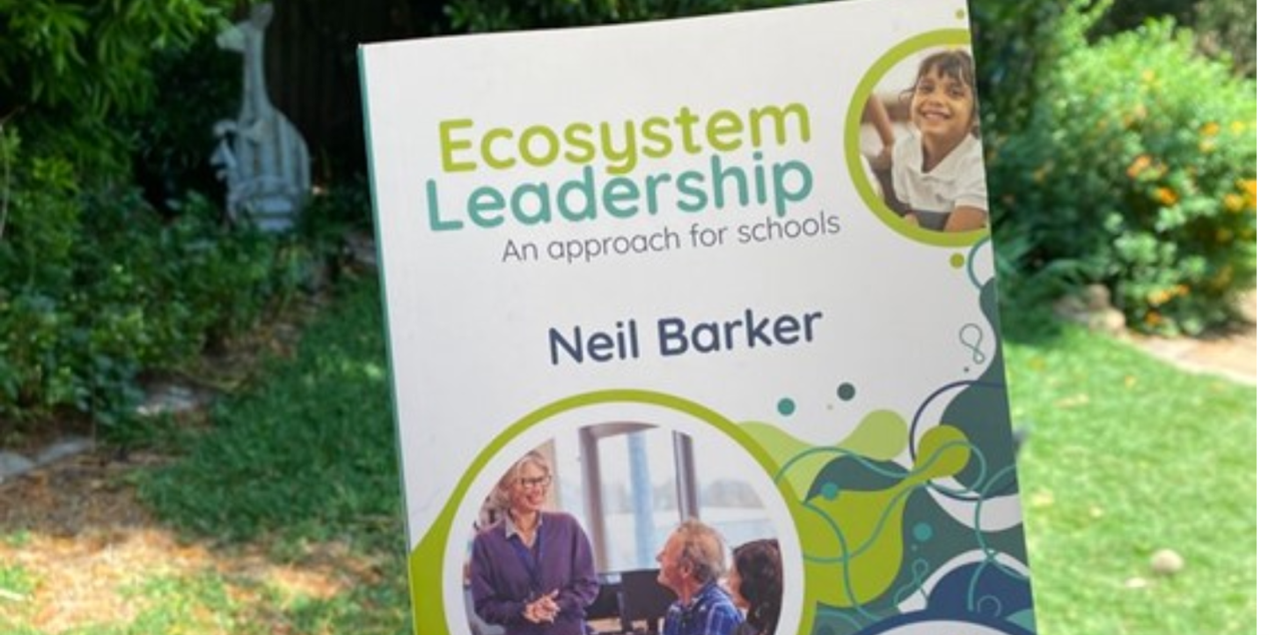
Ecosystem Leadership: An approach for schools
24 Jan 2023 5 minute readDeveloping leadership within, across and beyond a school is at the heart of a new book by renowned educational leader Neil Barker.
If we were to compare running a business with a school, the contrasts would be many.
A medium-sized business would usually have a manager with a team of direct reports, each specialising in an area. Through this structure, the information flow to the manager is refined and reduced.
A school will have a principal and, depending on size, they will be supported by an assistant principal and a business manager. However, a principal is still expected to interact regularly with school staff, students, parents and school committees, as well as the local council, the community, professional associations and the governing education department. The role of a school principal is additionally challenging as they are required to be educators, business managers, strategic planners, counsellors and, most importantly, leaders.
This ‘ecosystem’, that is unique to schools, encouraged Neil Barker to write his new book Ecosystem Leadership: An approach for schools. Neil has more than 40 years’ experience in the education sector, working as a teacher and principal in primary and specialist schools, as well as working in juvenile justice, at the Melbourne Zoo, and in education policy development. Neil is also a former director of the Bastow Institute of Educational Leadership.
Neil acknowledges that while there are professional development opportunities and short courses available for aspiring principals, many work their way up to the role without receiving any significant formal training in the specific collaborative and contextual skills required to lead a school and its community successfully.
Reflecting on his own leadership journey, Neil says, ‘It was incumbent upon me to ensure that the way I engaged in each of these interactions was consistent with my interpretation of what the school valued, what it was aspiring to achieve and the cultural mores of the school community.’
‘I was conscious of representing the school, and making decisions consistent with my interpretations of these things; but, on reflection, how consistent was my practice and decision-making with other leaders from the school? There were few instances when we as leaders across the school had explicit conversations about what underpinned our leadership or came to consistent and agreed positions on how we would lead and make decisions.’
‘In retrospect, I suspect that our leadership practice was ad hoc and based on implicit assumptions about how we would lead. Developing a more comprehensive and agreed view about the nature, focus and priority of leadership within and beyond the school could have ensured that that we were not leaving our leadership connectivity outside the school to chance and assumption.’
Neil says, ‘Some of the people I led with and for, and was led by, were great leaders, some were terrible, and some were just okay. Good, bad or indifferent, effective or ineffective, no 2 of these leaders led in the same way.’
Is it okay for each of the school’s leaders to lead in different ways, to lead differently at different times, to lead differently in common areas in the school, or across the school, with the same people, or with different people? Is uniformity of leadership practice desirable or not? The challenge is in designing a system that allows for both; an approach that integrates individual and collective school leadership. To achieve this, Neil recommends considering the following points to develop an ecosystem leadership framework that can work for the whole school.
Leadership context
Leadership context should consider how the school’s leadership approach is impacted by local and broader contexts and how the leadership approach affects those contexts.
Leadership vision
Leadership vision and associated principles outline what leadership in the school stands for and aspires to, and what guides leadership development and practice within, across and beyond the school.
Leadership processes
Well-documented, understood and applied leadership processes will provide certainty and coherence for leaders and for the school community. Members of the school community may not always agree with the results of a process, but they will understand that matters have been considered in a consistent and comprehensive manner
Leadership focuses
Establishing the key focuses for the school’s leadership effort helps leaders to target and improve their endeavours and provides transparency for the school community about the focus of leadership.
Leadership impact
Leadership impact provides an opportunity to understand, manage and improve the operation and impact of leadership within, across and beyond a school, with a focus on improved student outcomes.
Ecosystem Leadership describes a system of leadership that is fit for purpose and based on a school’s unique context, and always centred on improving student outcomes. The book provides practical, hands-on activities and templates to help school leaders develop collective leadership skills and practices.
Ecosystem Leadership: An approach for schools by Neil Barker is published by ACER Press and is available to order here.